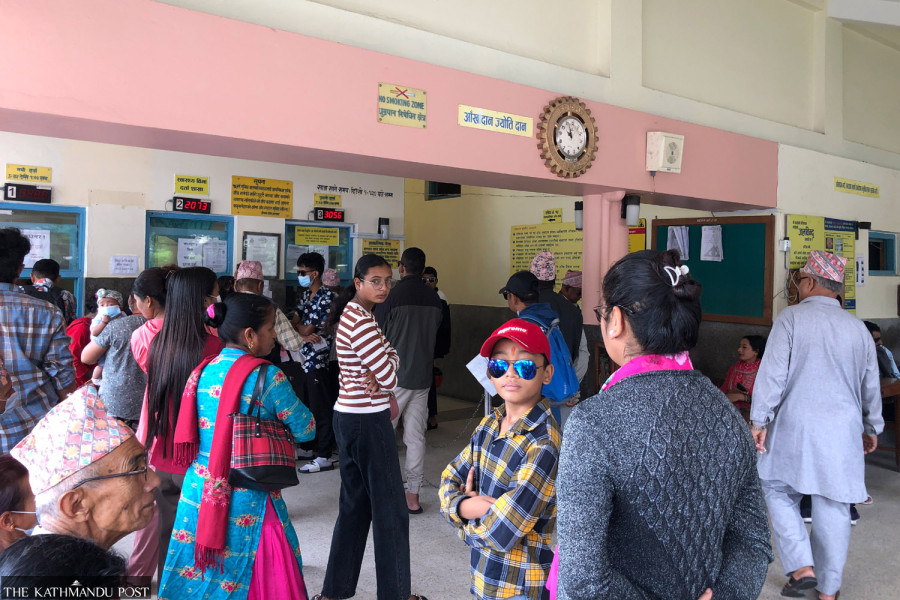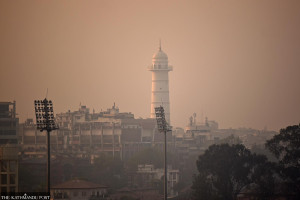Editorial
Catching the eyes
Only by acting promptly can Nepal keep a lid on the growing menace of conjunctivitis.
The nationwide rise in cases of conjunctivitis, colloquially known as pink eye, suggests this monsoon will be harsh for the citizens who are already living with the fear of catching dengue and other water-borne diseases like cholera and typhoid. This viral disease arises from viral conjunctivitis, bacterial infections, allergies, or toxins, and causes inflammation of the conjunctiva, the delicate tissue on the inside of the eyelids. Although cases of conjunctivitis are not uncommon between March and August, its rapid spread this year is nonetheless concerning, underscoring the need for urgent action for its containment.
In just two weeks, Janaki Eye Hospital in Janakpur has seen a sudden increase in cases of conjunctivitis, as around 45 percent of the 1,000 daily eye patients are found to be suffering from an eye infection. Similarly, at Gorkha Lions Service Centre in Gorkha district, 60 percent of those coming for eye examinations are being diagnosed with viral conjunctivitis. As the disease spreads, Bharatpur Metropolitan City and Lumbini Province have closed schools this week as the infection there is primarily affecting children. It has also become a growing problem in the Kathmandu Valley. Without timely preventive measures, the country could see an out-of-control outbreak of this highly contagious disease.
Conjunctivitis primarily affects children, individuals with low immunity and adults. If left untreated, it can lead to permanent damage to the eyes, according to health experts. Common symptoms range from pink or red colouration of the eyes to swelling, itching and excessive tearing, plus runny nose, cough, sore throat and fever in some cases. As conjunctivitis is communicable, cross-infection through hand-to-eye contact, eye contact with contaminated objects and respiratory tract droplets, among others, is possible too. Thus, following strict hygiene practices, including frequent handwashing, avoiding eye contact and keeping a safe distance from infected patients, are vital for both prevention from contact with the disease and for a break in its transmission. As we have already seen, the effects of conjunctivitis are far-reaching, even hampering children’s education.
Local governments and health ministries in some provinces are doing commendable jobs in controlling conjunctivitis. The efforts, however, must be supported by the federal government by managing necessary eye care professionals, checkups and public awareness campaigns. Adequate medical supplies should be provided to local eye-care centres and health posts in rural areas, as many of them lack even basic eye-care facilities. In Taplejung, for example, there are only two eye-care centres based in urban areas. Rural areas in the district—which have also seen an unusual rise in conjunctivitis cases—lack access to eye-care and equipment. The federal health ministry can coordinate with private clinics and organise eye camps in the areas lacking proper eye-care facilities. Additionally, information and awareness about symptoms, implications and preventive measures should reach every ear in the country.
Owing to climate change, incidents of water-borne diseases and several communicable diseases like conjunctivitis are becoming more frequent. The extraordinary outbreak of conjunctivitis this year is attributed to incessant rainfall, floods and a rise in humidity. According to the American Optometric Association, chemical conjunctivitis can be caused by irritants in the air and exposure to noxious chemicals. Health experts also relate it to water contamination as bacteria and viruses multiply this monsoon, straining local healthcare systems. Being mindful of the climate crisis and proactively managing health facilities has become indispensable. Only by acting promptly can Nepal keep a lid on the growing menace of conjunctivitis.




 20.92°C Kathmandu
20.92°C Kathmandu














